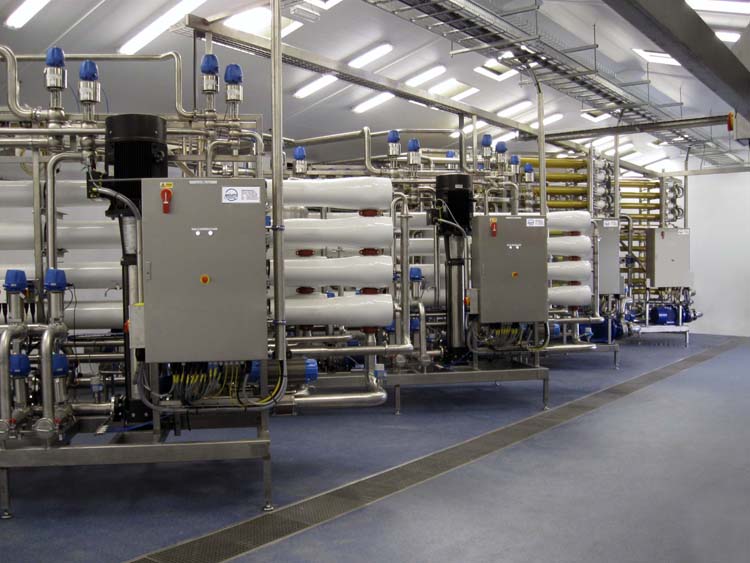As demand grows for more efficient wastewater treatment, Derek Davies from Axium Process explains the benefits of crossflow filtration technology.
The need for more effective wastewater treatment has never been so important. Although the amount of water on earth remains constant, the population is increasing at a rapid rate, placing even greater demands on finite resources. With just one per cent of the earth’s fresh water available for industrial, agricultural and consumption purposes, recycling is crucial to reduce pressure on resources.

For plant managers, recycling generates operational benefits too. If the right technology is applied, wastewater treatment can reduce costs and eliminate the risk of discharge compliance issues.
Traditional treatment risks
Traditional chemical wastewater treatments generally include large settlement tanks with flocculation and coagulation processes but the residual sludge poses environmental concerns. These systems are often combined with biological stages in aerobic or anaerobic conditions.
More recent adaptions include the addition of submerged membranes at the biological stage to create a membrane bio reactor (MBR) process. Biological systems operate effectively when carefully managed but are highly sensitive to change. Even small percentage movements in chemical dosing, temperature fluctuations, balance levels and unexpected loadings can result in a dramatic slowdown, discharge compliance issues and extended recovery times.
Membrane filtration benefits
Crossflow membrane filtration systems offer a simpler and more technically-advanced approach to treating wastewater, with the added advantage of recovering clean, high-quality water. These systems operate at the press of a button and process raw effluent directly, eliminating expensive and polluting chemical processes and overcoming the sensitivity of biological methods. Clean water recovery is usually between 75 and 95%, depending on the application, and this high-quality water can be immediately reused.
As the effluent is chemically untreated, certain materials contained in the small volume of concentrated waste can be of value; for example, dairy waste is high in protein, which can be recovered for second grade applications such as animal feed or fertiliser. The concentrated liquid fraction could be further refined by evaporation, targeting zero liquid discharge (ZLD), where all water is recovered and contaminants are reduced to solid waste.
Membrane filtration systems have a small footprint and are simple to install. The modular equipment is mounted on skids, making transportation easy and requiring minimal civil engineering infrastructure. A concrete platform with drainage is sufficient and provided the membranes are protected from freezing, the process remains relatively unaffected by the local environment. Systems can also be designed to fit permanently inside shipping containers offering rapid installation and further reducing the infrastructure required on site.
Design considerations
Almost every application is unique, even in similar industrial processes. However, systems designed by Axium Process typically uses a combination of micro or ultrafiltration followed by nanofiltration or reverse osmosis. Effluent can be treated by a single or multi-stage process, depending on requirements and local regulations for discharging water.
In most cases, the raw effluent is pre-filtered to remove larger solids, then continues to a batch tank and fed directly into the membrane system. It flows across the membranes under pressure, at high velocity, passing through carefully selected separation stages. Water molecules can pass through all stages, while everything else stays in a slightly concentrated form on the delivery side. The concentrate stream returns to the feed tank where it is blended with fresh influent and the process repeats until reaching maximum concentration.
The importance of research
The key to developing an effective system is research. Conducting pilot trials using full-scale commercial membranes enables real-life conditions to be replicated as closely as possible. Effluents are notoriously variable in nature and it is essential to capture the peaks and troughs along with the average when conducting trials. Throughout each stage of the process, the aim is to achieve healthy membrane flux by carefully selecting the membrane and optimising feed velocity, temperature, and pressure.
Meeting demand
Membrane filtration systems can be used in almost any industry and, thanks to advances in technology, offer an effective alternative to traditional treatment methods. Plant managers can be assured of a clean, robust, and reliable process for water recycling that separates the contaminants found in most industrial wastewater applications.
For further information, please contact AxiumProcess
www.axiumprocess.com
Tel: 01792 883 882
Email: info@axiumprocess.com

